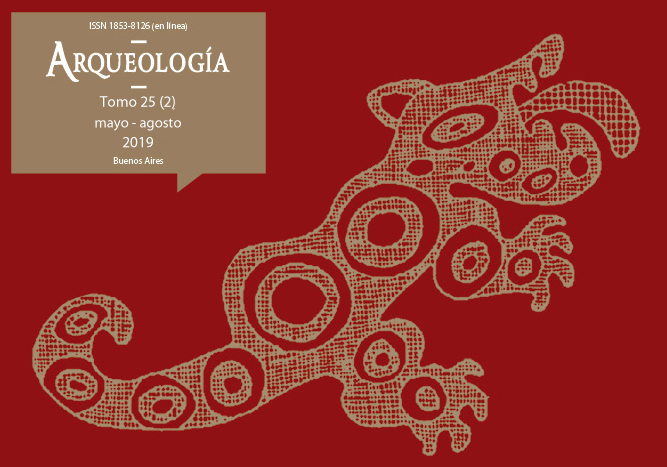First anthracological approach for the Tafí valley (Tucumán, Argentina)
Keywords:
Anthracology, Woody fuel, Northwest Argentina, Regional Developments period
Abstract
This paper presents the results of the analysis of a set of anthracological remains recovered in a stratigraphic profile located in the Tafí valley (Tucumán, Argentina). We carried out the macro-remains taxonomic identification by comparing the charcoals with a reference collection of histological sections that includes specimens of the study area flora. The charcoals were examined by observing the three diagnostic sections of the stem anatomy with a binocular magnifying glass, an optical microscope with incident light, and photographs were taken with a scanning electron microscope. We identified the following taxa: Baccharis sp., Chuquiraga sp., Alnus sp. and Chusquea sp. They are part of the local flora and would have been used during human occupations corresponding to the Regional Developments period. The data generated in this study encourages the development of this line of work in the area.Downloads
Download data is not yet available.
Published
2019-06-01
How to Cite
Aguirre, M. G., Peña Monné, J. L., & Sampietro Vattuone, M. M. (2019). First anthracological approach for the Tafí valley (Tucumán, Argentina). Arqueología, 25(2), 15-32. https://doi.org/10.34096/arqueologia.t25.n2.6845
Section
Articles
Copyright (c) 2019 María G. Aguirre, José L. Peña Monné, María M. Sampietro Vattuone

This work is licensed under a Creative Commons Attribution-NonCommercial-ShareAlike 4.0 International License.
Authors who publish in this journal agree to the following conditions:
- Authors retain copyright and yield to the journal right of first publication with the work registered with attribution license Creative Commons, which allows third parties to use the published always mentioning the authorship of the work and first publication in this magazine.
- Authors can make other independent and additional contractual arrangements for the non-exclusive distribution of the version of the article published in this issue (p. Eg., Inclusion in an institutional repository or publish it in a book), provided that clearly indicate that the work was published for the first time in this magazine.
- It allows and encourages the author / s to publish their work online (eg institutional or personal pages) before and during the process of revision and publication, as it can lead to productive exchanges and greater and more rapid dissemination of work published (See The Effect of Open Access).





(1)13.png)






1.jpg)
1.jpg)


13.png)
1.png)


(1)1.png)









